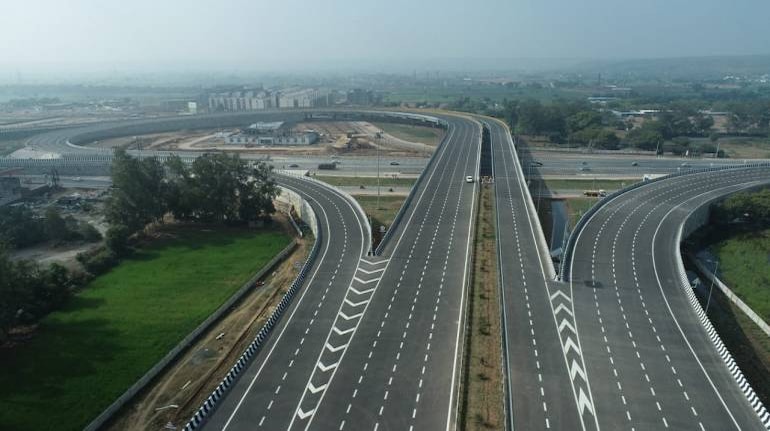



Be sure to reach three hours before the scheduled departure time! That’s the message airlines send flyers relentlessly, via SMS, social media posts and just about every other means of communication.
But what if you were to make a road trip and reach your destination within those three hours, reaching before the flight has taken off?
It certainly is possible.
Recently, the prime minister inaugurated a section of the Delhi-Mumbai expressway. When complete, the eight-lane highway will be like no other in the country. And it promises to cut the current travel between Jaipur and Delhi from over five hours to three — exactly as much time as airlines want you to spend in the airport.
Also Read: Aviation sector: Let’s tame this beast called slot hoarding
Union Minister for Road Transport and Highways Nitin Gadkari keeps making the headlines for promising road travel from Delhi to Dehradun, Jaipur, Haridwar and Chandigarh in two hours.
As if this wasn’t enough, a RRTS (Regional Rapid Transit System) is also taking shape between Delhi and Meerut. The RRTS could well be extended to other regions. The Mumbai-Ahmedabad bullet train project adds to this list.
Is the road threat real?
As road and rail infrastructure building gathers pace across the country, will shorter flights come under pressure? A look at the schedule shared by OAG Aviation exclusively for this article shows that the country has over 180 city pairs that are less than 350 km long, across airlines.
These short routes are a mix of cities, including flights operated due to regulatory requirements such as Route Dispersal Guidelines, connecting remote and less accessible areas with low traffic. The rest are traffic pullers such as Delhi-Jaipur, Delhi-Dehradun or Mumbai-Ahmedabad.
Over half of these flights operate on Category II A routes under the Route Dispersal Guidelines. These include flights between Srinagar and Jammu as well a plethora of flights within the North East.
Some have poor alternatives, such as Guwahati and Agartala, which are 248 km apart but take over 10 hours by road. There is also the case for flights between Jammu and Srinagar, which can see disruptions due to nature, apart from being a prime Cat II A route for airlines, where they are mandated to fly 1 percent of total capacity (by Average Seat Kilometre) of metro routes.
There is another set of routes, mostly in Jammu & Kashmir and Ladakh, as well as the North East, where the aerial distance is way shorter than the road distance and in some cases the road option does not exist in practical terms, such as Agartala-Kolkata.
The real challenge though would be on sectors from major metros. Delhi-Jaipur, Delhi-Chandigarh, Delhi-Dehradun, Bengaluru-Chennai and Mumbai-Ahmedabad are prime candidates for terrestrial modes of transport.
 Sectors that could face pressure from the expressway network (Graphic created by Upnesh Raval)
Sectors that could face pressure from the expressway network (Graphic created by Upnesh Raval)
Multimodal connectivity: the missing link
Traditionally, railway stations and state transport buses have shared the same area — allowing passengers to take a bus after alighting from a train and vice versa. While this has led to a good amount of passenger connectivity, there has never been multimodal connectivity for airports. At best recently we are seeing metro connectivity from airports in a few cities such as Delhi and Chennai, with others trying to catch up.
Why the importance? Because not all passengers who fly the short sectors like those to Jaipur, Dehradun or Chandigarh from Delhi originate in Delhi. There is a sizable number of passengers who fly to these destinations via Delhi from other cities either due to lack of direct flights or preferred timings.
This is where the missing link of multimodal connectivity takes centrestage. In a few markets in Europe, notably Germany and the Netherlands, airports are well connected with the railway network and airlines sell a combined itinerary of Air + Rail.
This is completely missing in India. Leave aside rail, in most cases road access is a challenge, with multiple lanes being built and then closed for traffic at departures. The new highways, such as the Yamuna Expressway and Delhi-Mumbai, start outside the city limits and there is no respite from traffic to reach the point where the highway starts.
A percentage of traffic, in all likelihood, would shift to alternative modes and this would mean that flights will continue, albeit with reduced frequency. And those wanting to fly short sectors will have to do so at a premium. At the same time, this will free up slots to expand to newer markets, which may not have been possible earlier due to slot constraints.
But even as we talk of expressways taking away traffic, one of the first expressways, between Mumbai and Pune, has nearly reached peak capacity, with passengers demanding that air connectivity be reinstated between the two cities!
Discover the latest Business News, Sensex, and Nifty updates. Obtain Personal Finance insights, tax queries, and expert opinions on Moneycontrol or download the Moneycontrol App to stay updated!
Find the best of Al News in one place, specially curated for you every weekend.
Stay on top of the latest tech trends and biggest startup news.